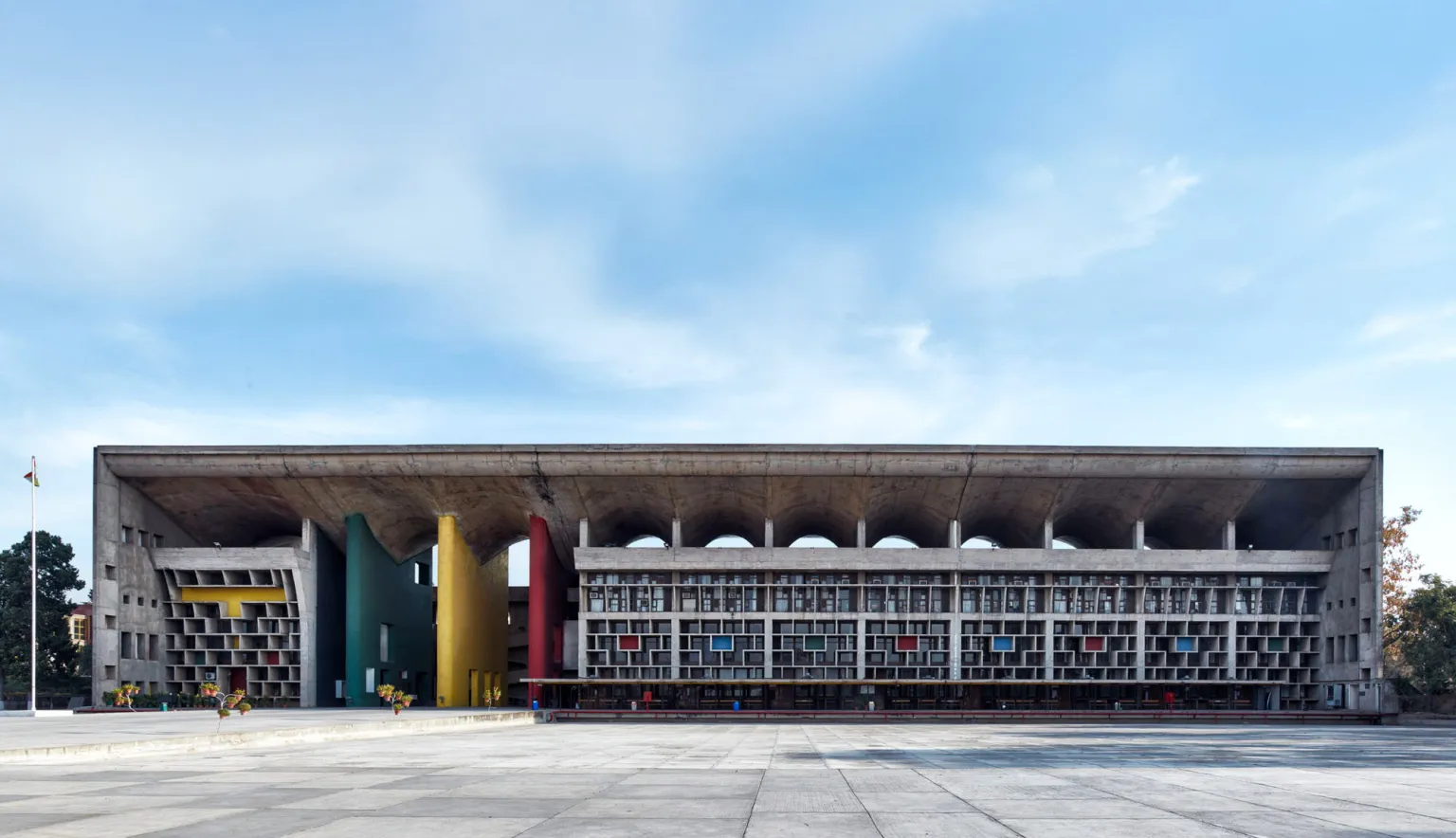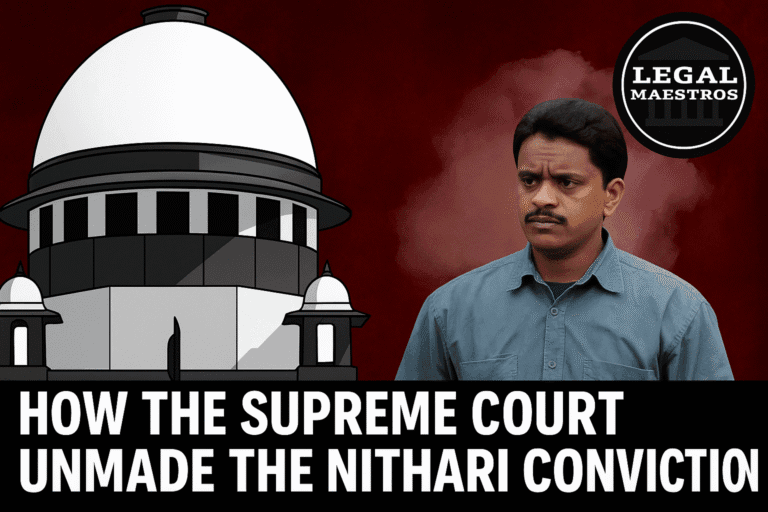
Facts
In this case, CHANDIGARH ADMINISTRATION v. REGISTRAR GENERAL, HIGH COURT OF PUNJAB AND HARYANA, CHANDIGARH, the High Court of Punjab and Haryana decided to construct a verandah in front of Court Room No. 1 of the High Court, similar to that in front of the Court Room No. 2 & 9. On 29th November 2024, the court issued a writ of mandamus to UT Administration to start construction of Verandah within a period of two weeks and complete the process of construction within four weeks thereafter. On 13th December, 2024, Court issued a notice of contempt against Shri C.B. Ojha (Chief Engineer, UT Administration) to explain why contempt proceedings were not commenced.
On 7th February, 2025 the Court said regarding the Kutcha Parking that, a writ of Mandamus is issued to U.T. Administration to lay green pavers in the kutcha parking and plant sufficient number of trees at reasonable intervals with tree guards providing space for parking and allow this kutcha parking to be used for parking of four wheelers visiting the High Court. On 21st February, 2025 the court dismissed the recalling of order dated 07/02/2025, stating that the opinion of the court facilitates sustained development, and would greatly help in resolving the crisis of acute shortage of parking space in the High Court.
However, the Chandigarh Administration objected, saying these changes might endanger the World Heritage status of the Chandigarh Capitol Complex, a UNESCO-listed site designed by famed architect Le Corbusier, and they appealed in Supreme Court against the order dated 29th November, 2024; 13th December, 2024; 7th February, 2025; and 21st February, 2025 passed by the High Court of Punjab and Haryana at Chandigarh in a Public Interest Litigation (PIL).
For any queries or to publish an article or post or advertisement on our platform, do call at +91 6377460764 or email us at contact@legalmaestros.com.
Arguments by the Appellant
The learned counsel of the appellant, regarding the first issue, i.e., construction of verandah in front of Court Room No. 1 of the High Court, said that the administration does not have any problem with the construction. However, they are concerned with the imminent possibility of the loss of World Heritage status of the Chandigarh Capitol Complex, which includes the Assembly, the High Court and the Secretariat, designed by the celebrated architect, Mons. Le Corbusier, who had planned the entire city of Chandigarh. Further, CA has already communicated with Foundation Le Corbusier, Paris and the World Heritage Committee, UNESCO, to forward the original maps of the High Court building so that the issue of constructing the verandah can be proactively examined and a considered decision can be taken without posing any threat to the World Heritage status of the High Court building.
Regarding the second issue, i.e., situation of the open area in front of Court Room No. 1, stated that the CA does not deny the fact that the lawyers and litigant who use this land are not protected from sun, winds, and rain, and for that the CA is working to get requisite permissions. They urged that the open area is a part of green belt under the Chandigarh Master Plan, 2031 and can be used for planting trees only. The counsel urged that the CA is taking steps to resolve the parking issue, but as the open area comes in green belt so let’s not alter it rather plant more trees.
Arguments by the Respondent
The learned counsel of the respondent, regarding the first issue, i.e., construction of verandah in front of Court Room No. 1 of the High Court, argued here that Court Rooms no. 2 and 9, which are of the same alignment as the Court Room No. 1, already have preexisting verandahs. The counsel argued that the Room No. 1 is exposed to sun, wind, and rain, making things difficult for litigants and lawyers, that is why, its construction is a dire need of the hour. Further, he said that the verandah won’t be a permanent structure which, can’t be removed, it can be removable and the decision is reversible.
For any queries or to publish an article or post or advertisement on our platform, do call at +91 6377460764 or email us at contact@legalmaestros.com.
Regarding the second issue, i.e., situation of the open area in front of Court Room No. 1, the counsel argued that on any working day, thousands of vehicles are being parked in the concerned open area, the significant advantages of laying such blocks will be eliminating the possibility of blowing of dust and sand because of frequent movement of the vehicles on the open area, and eliminating the possibility of formation of sludge and muddy surfaces during rainy season. The counsel argued that a parking area can be created by planting trees on the open land can still be visualized by ensuring that same number of trees are planted at regular intervals between the green paver blocks.
Judgment
In this case, both Justice Vikram Nath and Justice Sandeep Mehta delivered a joint opinion.
The bench discussed the construction of a verandah in front of Court Room No. 1 of the High Court, citing a letter from the CA and an additional affidavit. The letter reveals that the construction was considered by the Government authorities in 1956. The judges believe the construction was mooted by the Concerned Authority in 1956. The appellant argued that the request for approval had been forwarded to the Foundation Le Corbusier, Paris, but no reply has been received. The bench found no evidence of communication with Foundation Le Corbusier or UNESCO regarding the verandah construction.
For any queries or to publish an article or post or advertisement on our platform, do call at +91 6377460764 or email us at contact@legalmaestros.com.
The bench ruled that the construction of a verandah in front of Court Room No. 1 aligned with existing verandahs in front of Court Room Nos. 2 to 9 would not violate the Operational Guidelines, as it is not a major restoration or new construction within the main structure of the High Court building. Modern architectural techniques allowed for the construction of a verandah identical to existing ones without altering the main structure’s aesthetic value. The additional verandah could even be a collapsible structure if needed. The bench concluded that the construction of the verandah is justified and would not violate UNESCO guidelines. The administration could seek ex-post facto approval for the minimal protective measure without exception. The impugned orders do not warrant interference by the court in exercising jurisdiction under Article 136 of the Constitution of India.
The bench ruled that the issue of green paver blocks in an open parking area is not a dispute, as it is already used by lawyers and litigants during court hours. The Central Government defended the decision, stating that suitable deviations, including land use changes, can be allowed under the public trust doctrine. The bench suggested planting trees at regular intervals between green paver blocks to create both ground and vertical green cover, enhancing the overall ecological balance of the area. The pre-existing facility in the High Court has fallen short, so the suggestion to plant trees on the open area can still be visualized.
The High Court has upheld orders to place green paver blocks in an open parking area. However, the administration may consult with landscaping experts to ensure tree planting at appropriate intervals to facilitate vehicle parking and create shade and shelter. This exercise will be monitored by the High Court Committee. To give the appellant a break, contempt proceedings initiated by order 13th December 2024 will be kept abeyance for twelve weeks to comply with the order dated 29th November 2024. The appeals are disposed of, and any pending applications will stand disposed of.
For any queries or to publish an article or post or advertisement on our platform, do call at +91 6377460764 or email us at contact@legalmaestros.com.
Legal Analysis
In Rajeev Suri v. Delhi Development Authority, 2021 SCC OnLine SC 7 (Central Vista Redevelopment Case) it was held that the Environmental and heritage concerns must be balanced with legitimate developmental goals and Public trust doctrine does not prohibit sustainable and necessary development by the State. It asserted that if green paver installation and verandah construction are reversible and functionally necessary then these modifications are legitimate and proportionate.
The court relied on this judgment: Paragraph 42–43 of the present judgment:
“As long as a legitimate development activity can be carried on in harmony with the idea of environmental protection and preservation including sustainable development, the Courts as well as expert bodies should make their best endeavour to ensure that harmony is upheld and hurdles are minimized by resorting to active mitigating measures.” — Rajeev Suri, cited in para 42 of current judgment.
For any queries or to publish an article or post or advertisement on our platform, do call at +91 6377460764 or email us at contact@legalmaestros.com.
Similar judgements have been passed in the past, such as, In T.N. Godavarman Thirumulpad v. Union of India, (1997) 2 SCC 267 it was held that theenvironmental conservation must be harmonized with developmental needs and State must follow a balanced approach, applying the precautionary principle, but also public interest. Also, though not directly cited, the Court’s emphasis on balanced development and eco-conscious alternatives echoes Godavarman principles. Thus, this case aligns strongly with modern precedents favoring sustainable development and balanced environmental management.






![Research Assistantship @ Sahibnoor Singh Sindhu, [Remote; Stipend of Rs. 7.5k; Dec 2025 & Jan 2026]: Apply by Nov 14, 2025!](https://legalmaestros.com/wp-content/uploads/2025/11/Gemini_Generated_Image_s0k4u6s0k4u6s0k4-768x707.png)
![Karanjawala & Co Hiring Freshers for Legal Counsel [Immediate Joining; Full Time Position in Delhi]: Apply Now!](https://legalmaestros.com/wp-content/uploads/2025/11/Gemini_Generated_Image_52f8mg52f8mg52f8-768x711.png)